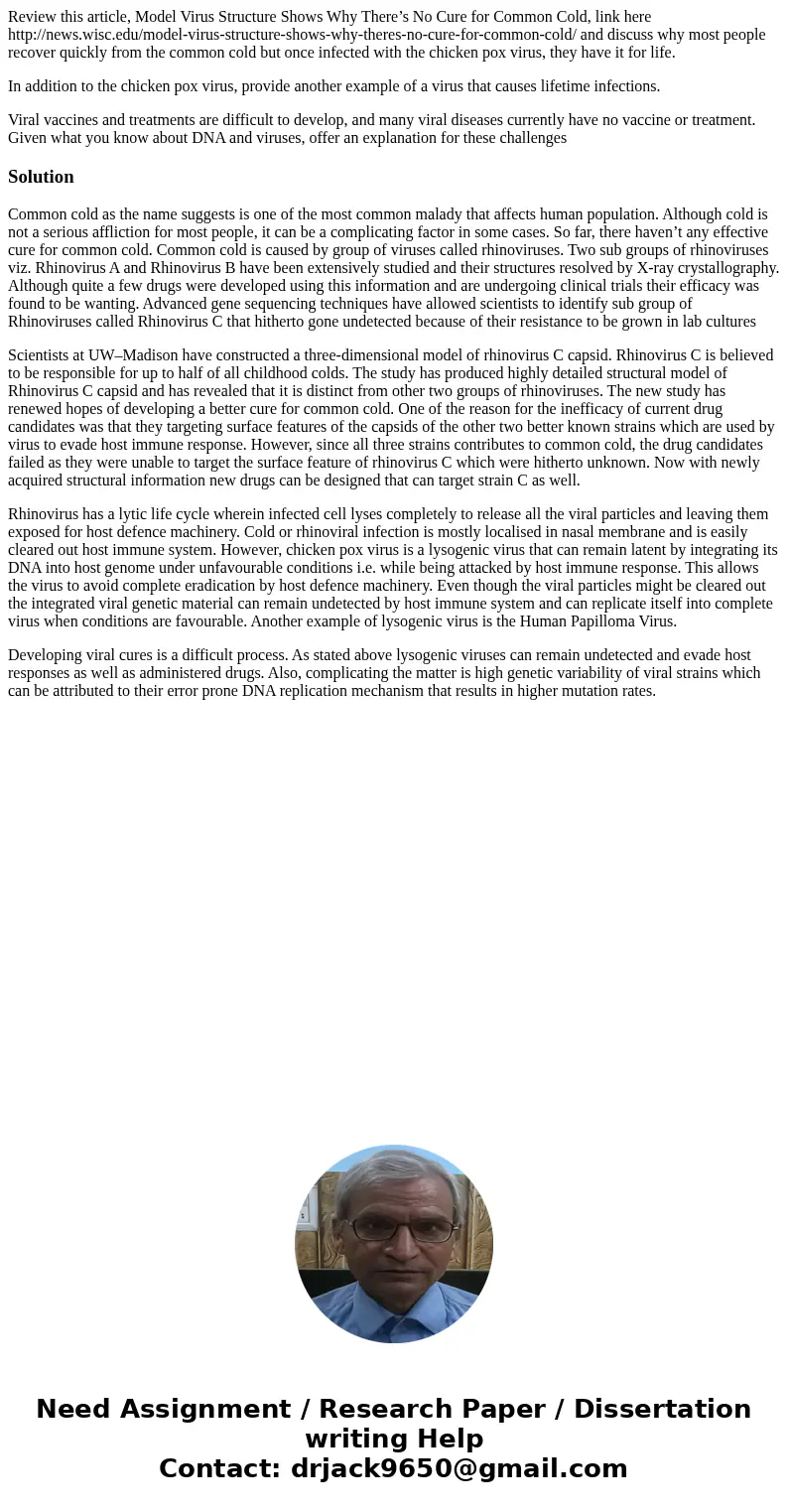Review this article Model Virus Structure Shows Why Theres N
Review this article, Model Virus Structure Shows Why There’s No Cure for Common Cold, link here http://news.wisc.edu/model-virus-structure-shows-why-theres-no-cure-for-common-cold/ and discuss why most people recover quickly from the common cold but once infected with the chicken pox virus, they have it for life.
In addition to the chicken pox virus, provide another example of a virus that causes lifetime infections.
Viral vaccines and treatments are difficult to develop, and many viral diseases currently have no vaccine or treatment. Given what you know about DNA and viruses, offer an explanation for these challenges
Solution
Common cold as the name suggests is one of the most common malady that affects human population. Although cold is not a serious affliction for most people, it can be a complicating factor in some cases. So far, there haven’t any effective cure for common cold. Common cold is caused by group of viruses called rhinoviruses. Two sub groups of rhinoviruses viz. Rhinovirus A and Rhinovirus B have been extensively studied and their structures resolved by X-ray crystallography. Although quite a few drugs were developed using this information and are undergoing clinical trials their efficacy was found to be wanting. Advanced gene sequencing techniques have allowed scientists to identify sub group of Rhinoviruses called Rhinovirus C that hitherto gone undetected because of their resistance to be grown in lab cultures
Scientists at UW–Madison have constructed a three-dimensional model of rhinovirus C capsid. Rhinovirus C is believed to be responsible for up to half of all childhood colds. The study has produced highly detailed structural model of Rhinovirus C capsid and has revealed that it is distinct from other two groups of rhinoviruses. The new study has renewed hopes of developing a better cure for common cold. One of the reason for the inefficacy of current drug candidates was that they targeting surface features of the capsids of the other two better known strains which are used by virus to evade host immune response. However, since all three strains contributes to common cold, the drug candidates failed as they were unable to target the surface feature of rhinovirus C which were hitherto unknown. Now with newly acquired structural information new drugs can be designed that can target strain C as well.
Rhinovirus has a lytic life cycle wherein infected cell lyses completely to release all the viral particles and leaving them exposed for host defence machinery. Cold or rhinoviral infection is mostly localised in nasal membrane and is easily cleared out host immune system. However, chicken pox virus is a lysogenic virus that can remain latent by integrating its DNA into host genome under unfavourable conditions i.e. while being attacked by host immune response. This allows the virus to avoid complete eradication by host defence machinery. Even though the viral particles might be cleared out the integrated viral genetic material can remain undetected by host immune system and can replicate itself into complete virus when conditions are favourable. Another example of lysogenic virus is the Human Papilloma Virus.
Developing viral cures is a difficult process. As stated above lysogenic viruses can remain undetected and evade host responses as well as administered drugs. Also, complicating the matter is high genetic variability of viral strains which can be attributed to their error prone DNA replication mechanism that results in higher mutation rates.

 Homework Sourse
Homework Sourse